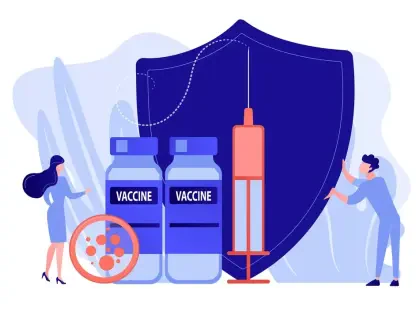In the wake of rampant gun violence and tragic accidents, there is a clarion call for the United States to enforce stringent gun control laws with a focus on safety and secure storage. Central to this issue is the heartbreaking incident involving De’Shawn L. Sturkey, a 19-year-old whose life was cut short due to the mishandling of a firearm by a friend. This tragedy serves as a stark reminder of the critical gaps in firearm safety legislation. The current regulatory landscape has proven ineffective in averting avoidable deaths, and this failure highlights the acute need for comprehensive reform to prevent similar incidents. As the nation grapples with escalating gun violence, a fundamental question arises: Are current laws adequate to safeguard individuals and communities from the perils of misuse and accidental shootings?
The Crisis of Gun Violence
Staggering Statistics
The severity of the gun violence crisis in the United States is evident in the unsettling statistics that paint a grim picture. In 2021, the nation faced an overwhelming loss due to firearms, with over 26,000 individuals dying from suicides and nearly 21,000 becoming victims of homicides. These numbers reflect only a part of the broader problem, which also includes 549 accidental firearm deaths. Mass shootings, defined as incidents where at least four individuals, excluding the shooter, are injured, numbered an alarming 502 events during that same period. This data encapsulates a crisis deeply embedded within American society, necessitating immediate action to mitigate its disastrous effects.
The prevalence of gun violence is not just a matter of statistics; it presents a profound challenge to public safety and community well-being. Each incident reverberates through families and neighborhoods, leaving a lasting impact. The data serve as a compelling argument for assessing current strategies and exploring legislative frameworks that could prove effective in reducing such incidents. While statistical overviews are crucial in grasping the scope of the crisis, they also underscore that behind each number lies a human story, a tragedy that might have been averted with more stringent controls in place. This backdrop sets the stage for a discourse on the urgent need for legislative intervention.
Firearm Prevalence
The alarming rates of firearm ownership in the United States are a central aspect of the gun violence issue. With an astounding 120.5 guns per 100 residents, the country leads globally in firearm prevalence, far exceeding other nations like Yemen, which has the second-highest rate with 52.8 guns per 100 residents. This significant disparity highlights a unique challenge faced by the United States, wherein the sheer volume of firearms complicates efforts to enforce even the most basic safety measures. The widespread availability of firearms calls into question the adequacy of current regulatory frameworks and underscores the critical need for reform that addresses both ownership and storage.
The cultural and historical context of gun ownership in the United States is undeniably complex. Despite the recognition of the Second Amendment, which enshrines the right to bear arms, there is a pressing need to reconcile these rights with the equally important imperative of public safety. The prevalence of firearms, when combined with insufficient safety measures, creates conditions ripe for accidents and misuse. To address this, legislative efforts must focus not only on controlling the number of guns in circulation but also on implementing standardized and enforceable safety measures that prevent tragic incidents. Reform is not about disarmament but about responsible ownership.
Advocacy for Legislative Action
Misconceptions and Realities
The debate over gun control in the United States is often clouded by misconceptions, particularly those propagated by powerful groups like the National Rifle Association (NRA). A common narrative suggests that any effort to introduce stricter laws is a thinly veiled attempt at disarmament, a significant concern for many gun owners who value their Second Amendment rights. However, the reality paints a different picture. Effective gun legislation seeks to balance these rights with public safety, aiming to reduce the incidences of gun violence and accidental shootings without infringing upon constitutional freedoms. Such measures are not about removing guns from responsible citizens but ensuring weapons are used and stored responsibly.
There is an urgent need to dispel these myths to pave the way for constructive dialogue and action. Recognizing the constitutional right to gun ownership does not preclude the implementation of safety measures that can minimize violence and protect lives. A balanced approach can facilitate progress, emphasizing the shared goal of making communities safer. Responsible measures, such as background checks, safe storage requirements, and child access prevention laws, could significantly reduce the occurrence of accidental and intentional gun-related incidents. By focusing on education and responsibility, stakeholders can forge a path toward more effective legislation.
The Role of Child Access Prevention
The safety of children concerning firearms is a critical concern that necessitates immediate attention and action. At present, the United States lacks a cohesive federal standard for child access prevention, with regulations varying significantly across states. While 26 states, alongside Washington D.C., have instituted child-access laws, the absence of a uniform federal mandate leaves many gaps that can lead to dangerous outcomes. Research on the impact of secure firearm storage is unequivocal, showing a potential reduction in unintentional injuries by up to 85%, particularly among younger demographics. This evidence underscores the critical need for nationwide policies that mandate safe storage practices.
To protect children from the hazards posed by unsecured firearms, it is imperative to move beyond the current patchwork system of state laws. A federal legislative framework would ensure consistent enforcement and raise public awareness about the importance of safe storage practices. Such federal measures could include requiring gun owners to keep firearms unloaded and locked away in a secure manner, away from children and unauthorized users. By instituting uniform safety standards, the nation can make significant strides in reducing accidental shootings and fostering environments where firearms are handled with the utmost caution and care.
Holding Gun Owners Accountable
Consequences of Negligence
The real-world implications of negligent firearm storage were tragically highlighted by a case at Florida State University. In this incident, lax security measures allowed a student access to a firearm, culminating in a horrific school shooting that claimed two lives and injured five others. This case starkly illuminates what can happen when firearms are not properly secured and underscores the necessity for holding gun owners accountable for safeguarding their weapons. The devastating outcomes of such negligence are not isolated incidents; rather, they reflect a broader pattern of oversight that demands intervention and reform to prevent similar tragedies.
Adopting strict penalties for negligence is a crucial step toward fostering a culture of accountability among gun owners. When gun owners understand the serious legal consequences of failing to secure their firearms, they are more likely to adopt responsible storage practices. This cultural shift is necessary to ensure that firearms are stored safely and accessed only by those with explicit permission, thereby sharply reducing the risk of misuse and accidental discharge. Accountability measures should include stringent fines, loss of gun ownership rights, and potential criminal charges, setting a clear expectation of responsible gun stewardship.
Cultivating a Culture of Responsibility
Instilling a culture of responsibility among gun owners is essential for enhancing compliance with safety laws and preventing future tragedies. The introduction of severe penalties for failing to adhere to storage regulations sends a strong message about the importance of responsibility. Such reforms can potentially transform the mindset of the gun-owning community, encouraging them to embrace practices that prioritize safety over convenience. Enforcement of these penalties would not only act as a deterrent against negligence but also promote the broader adoption of best practices for gun ownership and handling.
Creating an environment where safety is the norm involves education and advocacy alongside legislative efforts. Gun owners should be encouraged and empowered to take active steps in educating themselves about safe storage techniques, firearm handling, and the implications of non-compliance with safety laws. Public awareness campaigns and training programs could play a vital role in this cultural transformation, equipping gun owners with the knowledge and tools necessary to be responsible stewards of their firearms. The goal is to cultivate a community where safe practices are inherently understood and vigilantly upheld, significantly contributing to the reduction of preventable firearm-related incidents.
The Path Forward
Federal Legislative Suggestions
The path forward demands decisive action, rooted in the implementation of centralized, stringent federal laws focused on child access prevention and secure firearm storage. These legislative changes are critical in addressing the rampant problem of gun violence, offering a solution that prioritizes public safety while maintaining individual rights. A uniform federal approach would eliminate discrepancies between state laws, ensuring that all gun owners adhere to the same high standards of responsibility and safety. This strategic regulatory overhaul promises to drastically reduce firearm-related incidents, safeguarding communities across the nation.
By emphasizing comprehensive education and enforcement components, these legislative measures can effectively mitigate risks associated with firearm ownership. Policymakers must focus on crafting laws that balance the rights of gun owners with their responsibilities, ensuring enforcement is both fair and rigorous. Legal frameworks should incorporate mandatory training programs, certifications for ownership, and regular compliance checks to maintain standards. By turning federal legislation into a catalyst for change, the country can move toward a safer, more secure environment for all residents, regardless of location or demographic.
Societal Safety Imperative
The grim statistics surrounding the gun violence crisis in the United States are stark indicators demanding urgent attention. In 2021, the nation suffered considerable loss due to firearms, with over 26,000 individuals dying from suicides and nearly 21,000 victims of homicides. Adding to these tragic numbers, there were 549 accidental firearm deaths. Mass shootings, defined as events with at least four individuals injured, excluding the shooter, numbered an alarming 502 incidents in that year alone.
This crisis is deeply woven into the fabric of American life, necessitating immediate measures to address its disastrous consequences. Gun violence is not just statistical; it’s a profound threat to public safety and community cohesion, causing ripple effects in families and neighborhoods. The data underscore the need for a thorough evaluation of current strategies and legislative approaches that could effectively reduce such tragic events. Each number tells a human story with the potential to inspire change if more stringent controls were enacted, highlighting the critical need for legislative action.









